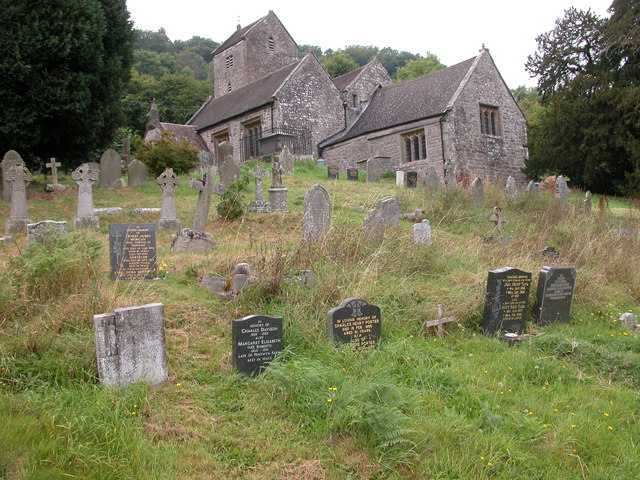(from a Newsletter of the 1970s)

In looking into origins, we find it was the Welsh King hywel Dda who, in the year 943, prescribed one acre as the extent of a burial ground, with the Church in the centre. Some are actually round in shape. Earlier, we find traces of Christian burial grounds in Roman Times – there is a ‘Chi Rho’* sign at Caerwent and a very ancient burial ground round the monastery at Llantwit Major. Later monasteries, too, had their own burial grounds but they also grew up where a holy man or hermit lived or preached and was buried, associated always with a spring or well, a tree or rock.
Bishop Gregory first consecrated a churchyard round about 580 and Pope Gregory in 604 is said to have written that ‘burial in churchyards is preferable to cemeteries because worshippers walking by the graves before entering church can remember the dead in their prayers’. The custom of sanctuary, which in 431 included the church ‘courtyard’, was abolished by 1723.
From 1200 onwards churchyard walls were advocated by the Bishops, the churchwardens being responsible for their repair. (They still are!) Grazing rights were given to parsons after the Reformation. The Churchyard, though (and the church, too, with the exception of the chancel) was considered community property and was used for all sorts of recreational and business purposes before parish halls and playing fields. The chancel, where masses were said, was considered in early times the important place for burials, but must have got filled up, as indeed have many of God’s Acres. Our own is rapidly becoming so on all but the north side. It is interesting to note that up to the 17th century gravestones were laid flat – a practice often recommended nowadays for ease of maintenance.
Work on our churchyard includes levelling and preparation of the nort ground and, as you will have noticed, a new wall round the Garden of Remembrance – protected by the remains of our old stone cross, thought, sadly, to have been broken by the ‘puritans’. Paths have also been laid to give access to the majority of the graves, whilst there will be areas kept ‘natural’ for the wild flowers for which the churchyard is well known and loved.
The churchwardens appreciate the question of balance between the wild and picturesque, and access to the graves, but point out that if left entirely alone the obnoxious weeds would spoil things for both the conservationists and the parishioners who wish to get to family graves and keep them in order. A plan is being made of the churchyard but there are still some unmarked graves to which we are unable to put a name. We appeal to anyone who knows of one to inform the churchwardens.
* ‘Chi Rho’: the initial Greek letters of ‘Christ’
[from: Penallt – A Village Miscellany]